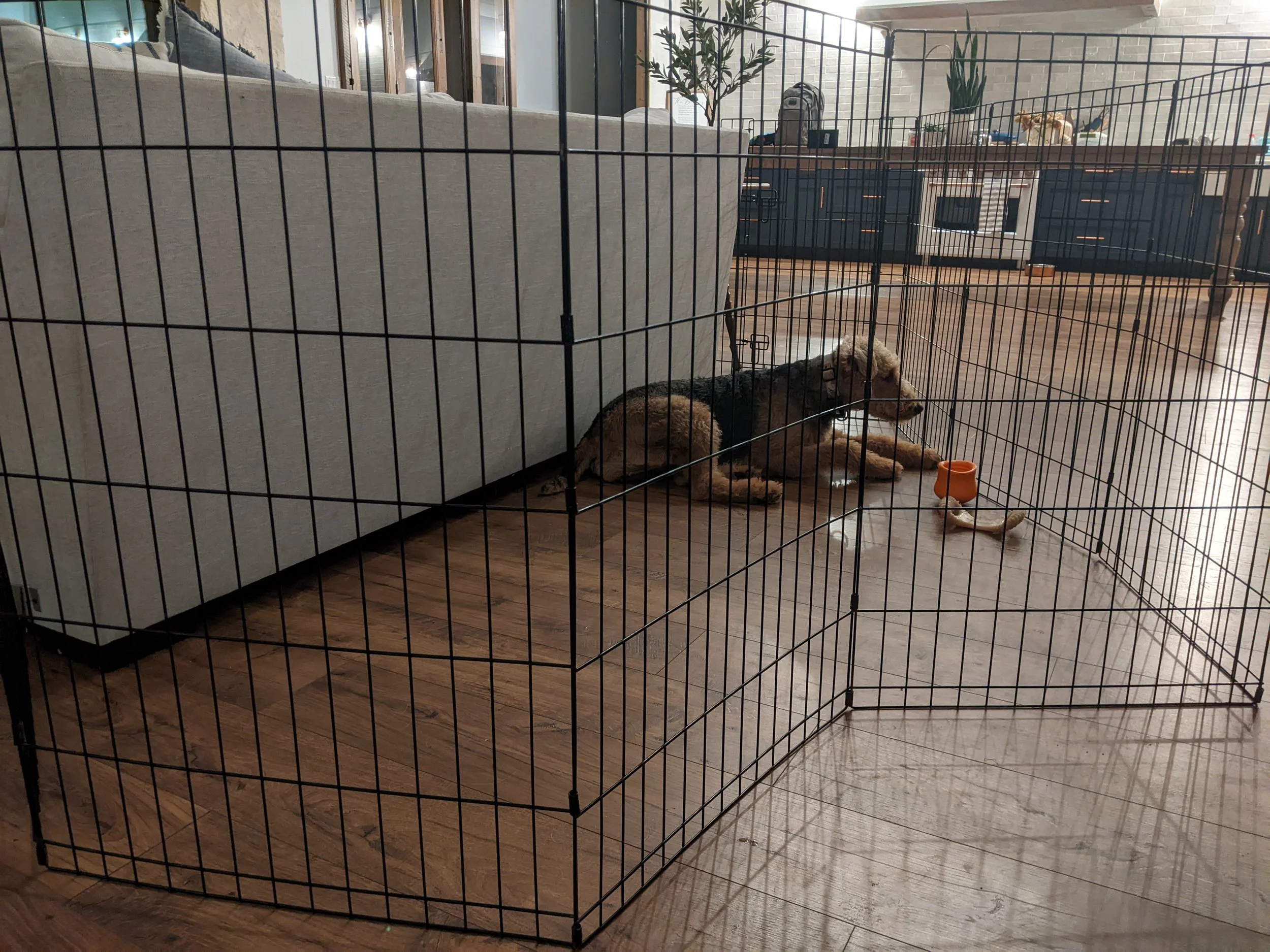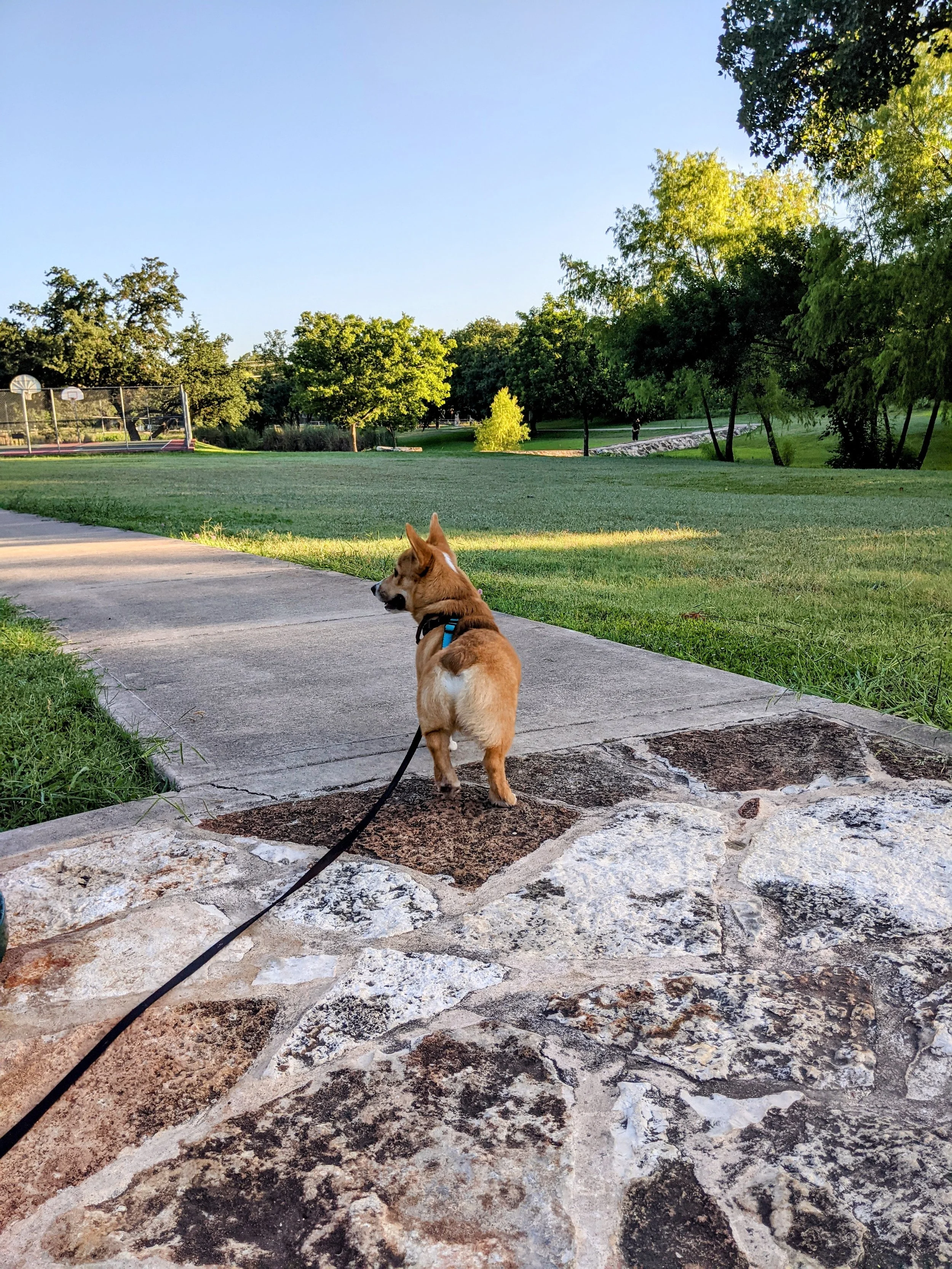Crate Guilt: When Crating the Dog Feels Yucky
Have you ever had crate guilt? That squirmy, yucky sensation that comes on when it’s time to put your dog in the crate?
Or maybe you’re tense the whole time he’s in there — feeling like you need to hurry up and get him out.
I’ve been there.
Even as a professional dog trainer, I’ve been there.
Even though I believe proper crate use can lead to a better quality of life for everyone, I sometimes still experience crate guilt.
The Yuck of Canine Confinement
Many of us don’t like having to crate the dog.
It feels mean. Or like a punishment. Or like they’re just missing out.
Add in any sort of protest from the dog, and crate time gets even yuckier: if confinement isn’t the dog’s first choice, it becomes a very uncomfortable choice for us.
But Here’s the Thing
I admit that confinement is inherently restrictive and can become inhumane, and I do prefer dogs living life with their people as much as possible.
However.
Very few (if any) of my clients are approaching an inhumane level of confinement. And while they’re certainly living life with their dog, they aren’t enjoying all of it.
After all, that’s why they called me.
When dogs are hard to live with, I often recommend more crating or confinement as part of the overall training plan to get relief and improve behavior.
Rosie needs confinement to stop harassing her much older housemate when he needs a break.
But What About the Crate Guilt?
So even though I know (in my head) that crating is often a necessary part of behavior change and a better quality of life for everyone, what do I do when my heart feels bad about it?
#1 What’s the Alternative?
When I start to get that sinking feeling about crating the dog, I ask myself: “what’s the alternative? If I leave this dog loose, what can I expect?”
Puppies often need some form of confinement to keep them safe, encourage good habits, and give the humans a rest!
For me, that question often gets one or both of these answers:
Poor choices. Illegal chewing, counter-surfing, mouthing me, jumping on a visitor, etc.
Regardless of the dog’s flavor of “poor choices,” I do not want them becoming a habit. And they will if he keeps practicing them.Frazzled human. Supervising a dog who tends to make poor choices can be exhausting. There comes a time when my brain can’t take it, and I must confine the dog so I can actually concentrate on something else… or just take a break!
That break is ultimately good for the dog, because if I’m run-ragged, my patience runs thin and the dog
#2 Balance with Enrichment.
Even if I know I’m not approaching inhumane crating, and that confinement is a better alternative, and that we both need a break to be better in the long run, there’s still one more ingredient for quieting the crate guilt: enrichment.
A relaxing, long-line Sniffari is a great way to meet your dog’s needs before asking him to rest in a crate — sniffing is physically exhausting for dogs!
Dogs need more than food, water and shelter.
They also have social, physical, mental and species-specific needs — things like sniffing, chewing, digging, and foraging.
Enrichment is providing opportunities to engage in those behaviors.
If I know that his needs have been met and he’s ready to rest, confinement is an easier choice for me because I know resting will be an easier choice for him.
There’s a difference between doing nothing with your dog + making him spend 12 hours of the day crated, and positively engaging with your dog in ways that enrich his life then asking him to rest in a crate.
Meet the Dog Trainer and Blog Author
Leighann founded Koinonia Dogs in 2014 and has been a Certified Professional Dog Trainer in the Austin, TX area since 2019.
She's a problem-solver by nature and loves creating cooperation through conflict-free communication so both ends of the leash enjoy life together.




